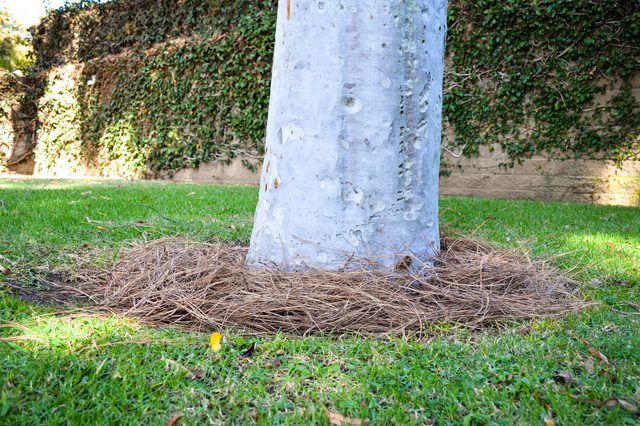Bulbs
Flower Basics
Flower Beds & Specialty Gardens
Flower Garden
Garden Furniture
Garden Gnomes
Garden Seeds
Garden Sheds
Garden Statues
Garden Tools & Supplies
Gardening Basics
Green & Organic
Groundcovers & Vines
Growing Annuals
Growing Basil
Growing Beans
Growing Berries
Growing Blueberries
Growing Cactus
Growing Corn
Growing Cotton
Growing Edibles
Growing Flowers
Growing Garlic
Growing Grapes
Growing Grass
Growing Herbs
Growing Jasmine
Growing Mint
Growing Mushrooms
Orchids
Growing Peanuts
Growing Perennials
Growing Plants
Growing Rosemary
Growing Roses
Growing Strawberries
Growing Sunflowers
Growing Thyme
Growing Tomatoes
Growing Tulips
Growing Vegetables
Herb Basics
Herb Garden
Indoor Growing
Landscaping Basics
Landscaping Patios
Landscaping Plants
Landscaping Shrubs
Landscaping Trees
Landscaping Walks & Pathways
Lawn Basics
Lawn Maintenance
Lawn Mowers
Lawn Ornaments
Lawn Planting
Lawn Tools
Outdoor Growing
Overall Landscape Planning
Pests, Weeds & Problems
Plant Basics
Rock Garden
Rose Garden
Shrubs
Soil
Specialty Gardens
Trees
Vegetable Garden
Yard Maintenance
How to Mulch a Garden with Pine Needles
How to Mulch a Garden with Pine Needles. Pine needle mulch keeps weeds down and slows the rate of water evaporation from the soil. The fine texture and light, even color of this organic mulch material lends a refined appearance to the landscape. The mulch comes from pine trees (Pinus spp.), which grow in U.S. Department of Agriculture plant...
Pine needle mulch keeps weeds down and slows the rate of water evaporation from the soil. The fine texture and light, even color of this organic mulch material lends a refined appearance to the landscape. The mulch comes from pine trees (Pinus spp.), which grow in U.S. Department of Agriculture plant hardiness zones 3 through 10, with some variation depending on the species.
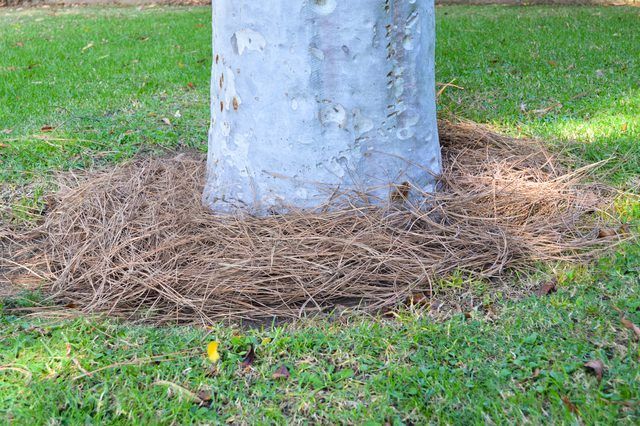
When you purchase pine needle mulch, you'll most likely find it under the name pine straw. It comes in a loosely wrapped bale, either round or square. For small garden projects you can often find it in bags. Though pine needles have a reputation for causing acidification in the soil, this mulch doesn't actually change the soil pH significantly.
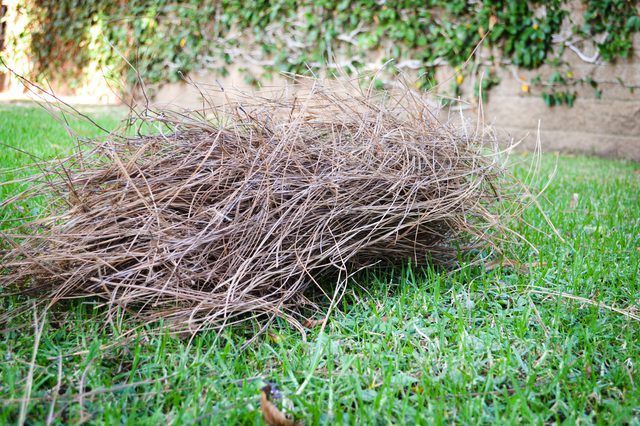
Spread pine needle mulch 3 inches deep the first time you use it. Before laying down mulch, prepare the area by weeding and removing sticks, rocks and dead plant material. As the mulch settles, it compacts to approximately 1 1/2 inches deep. Spread the mulch over the root zone, leaving 3 inches between the base of trees and shrubs and the mulch. This minimizes rot problems around the base of trees and shrubs. Smooth out the mulch with a light leaf rake.
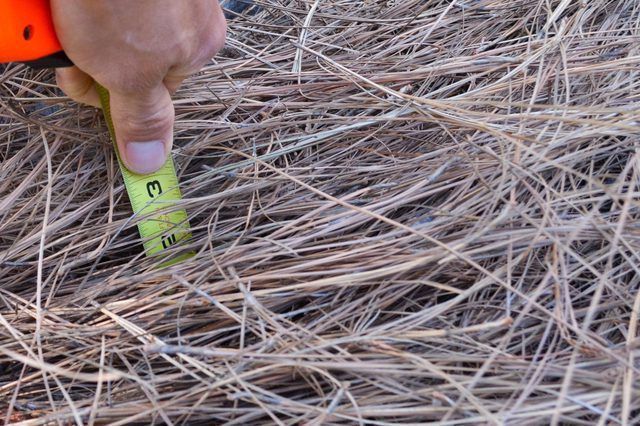
While pine needles don't break down as fast as some other types of organic mulch, they still break down. To keep the mulch layer consistent, replenish with 1 inch of pine needles each year, either in the spring or the fall. Avoid mulching any garden bed too deeply. A 1 1/2- to 3-inch layer of pine needles is ideal for all gardens. If you mulch too deeply, the weight of the organic material can damage tree and shrub roots.
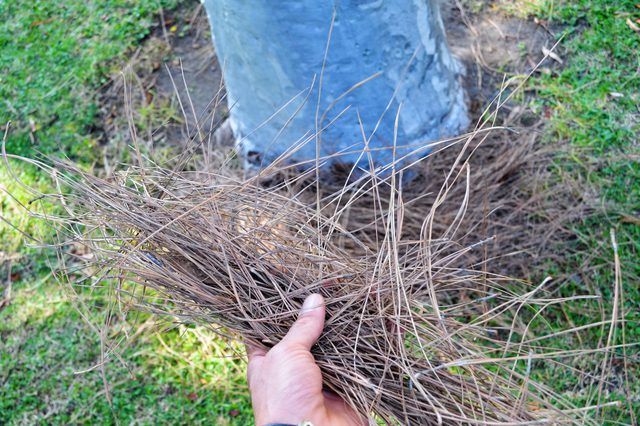
Pine needle mulch works exceptionally well around trees and shrubs. The dense layer over the root zone insulates the soil, keeping it cooler in the summer and warmer in the winter. The pine needle mulch layer also cuts down on weeding by smothering weed seeds before they germinate. With less need to weed around landscape trees and shrubs, you reduce the chance of damaging the trunk with weed-eating tools while also cutting down on garden work. Pine needle mulch is also a smart choice for sloping ground because as the needles settle, they lock together, making them less likely to roll down the hill.
